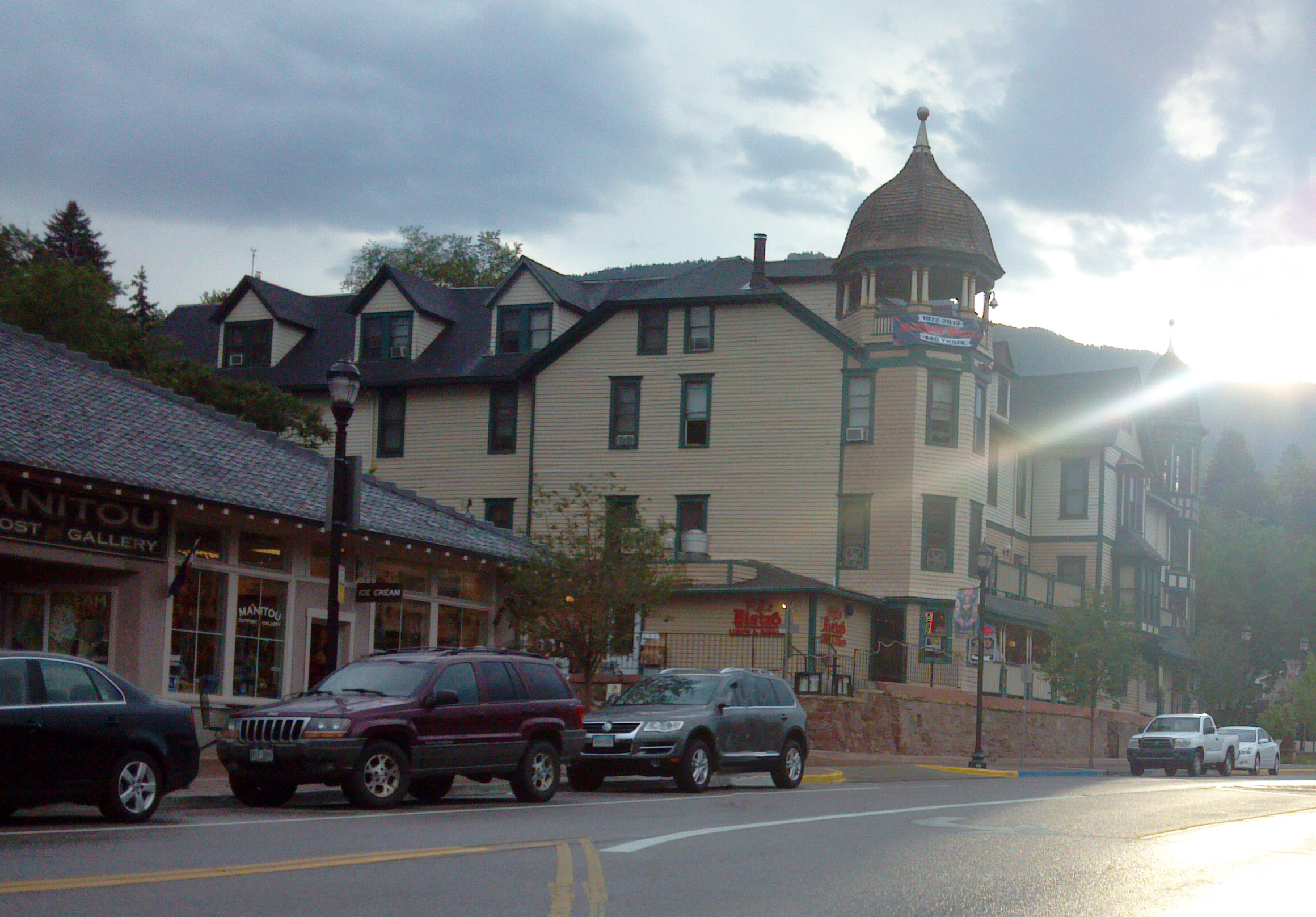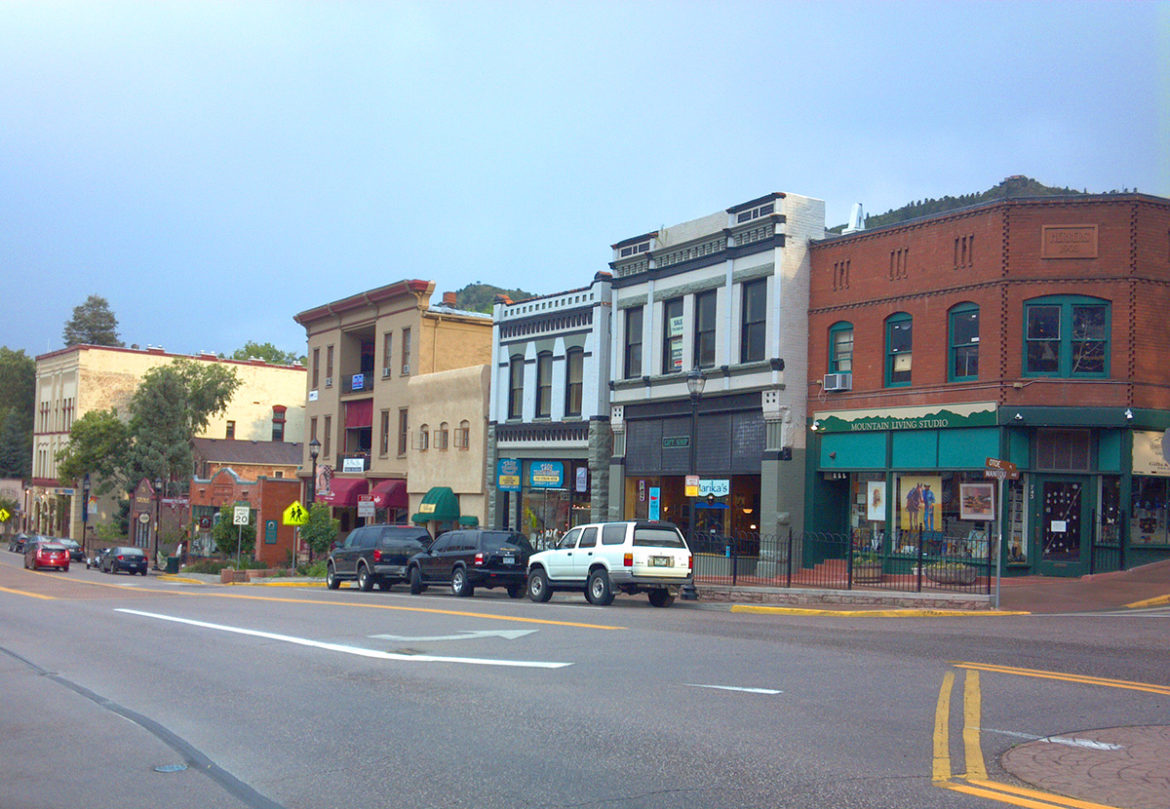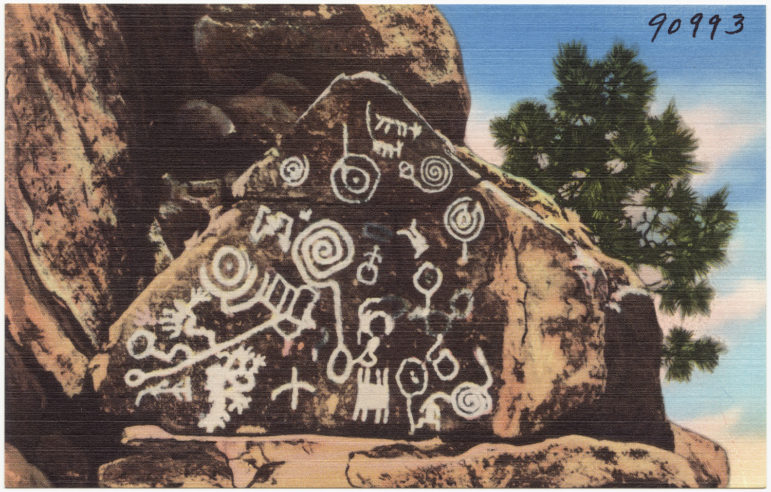MANITOU SPRINGS, Colo. – Just six and a half miles separate Manitou Springs from Colorado Springs. The former was a hippie haven in the 70s. The latter hosts five military bases and Christian Right organizations. Manitou Springs allows the sale of recreational pot. Colorado Springs does not. On February 17, The Colorado Sun published a story about the witches of Manitou Springs.
The story of the Witches of Manitou Springs involves the use of the word “witch” with many different meanings and intentions.

Manitou Springs [Image Credit: S. Ciotti]
Chas S. Clifton wrote in a recent post on his site, Letter from Hardscrabble Creek “The Witches of Manitou”—More than an Urban Legend in response to The Colorado Sun. article. Clifton wrote that in the 80s, he was one of the “Witches of Manitou Springs.”
Recently, The Wild Hunt spoke with him about the Witches of Manitou Springs.
In the mid-70s, Clifton, an American Wiccan, had already heard rumors, of “ceremonies in the big cave.” The stories predated his involvement in Wicca. Clifton is the current editor of Pomegranate: The International Journal of Pagan Studies, a peer-reviewed academic journal.
Clifton’s 80s coven, Iron Mountain, held rituals in a building with hot tubs. The coven held rituals, handfastings, and festivals in that building. After the ritual, they would go into the hot tubs. The Iron Mountain Coven published “Iron Mountain: A Journal of Magical Religion.” Clifton described this publication as ancestral to “The Pomegranate.”
Clifton said he was “pretty much out of touch with the scene there today.” He only knew of one group of practicing Wiccans today in Manitou Springs. That group has a Facebook page. He said other covens or groups may exist.
As of March 21, that Facebook group, The Manitou Witch, has 385 followers and 372 likes. Its public posts resemble those from other Pagan Facebook groups. On the group’s “About” page, the group links itself to the motto of Manitou Springs, “Keep Manitou Weird.” That statement continues “unlike conservative neighbors, there’s no need for those in our community to unwillingly occupy space in the broom closet; we welcome those from all walks of life unreservedly.” Despite several requests for information, the group had made no response by press time.
Clifton believes that that the fervor between the communities has died down. Like many counter-cultural outposts, Manitou Springs has gentrified. Clifton said “There is a little “culture war,” but I think it was bigger in the past.” Still, an occasional evangelical minister will make a big deal out of confronting the forces of darkness.
The cultural clashes may have mellowed, but the two nearby cities reflect different values.

Manitou Springs [Image Credit: S. Ciotti]
Colorado Springs
Colorado Springs has a population of about 473,000. The US Air Force Academy sits just north of Colorado Springs.
The city also has nicknames that include the Evangelical Vatican and the Christian Mecca. At least 21 Conservative to far-right Christian groups are located in Colorado Springs. Focus on the Family, for example, has its headquarter there.
Still, Colorado Springs, however, is not monocultural. An LGBT pride parade occurs there. Colorado Springs has two metaphysical stores. At least one “out” witch, with an active FB page, lives in Colorado Springs.
Manitou Springs
In 2010, Manitou Springs had a population of about 5,000. The Ute and Arapaho drank from its springs for healing. In 1872, the town’s developers founded the town as a scenic health resort. Ever since then, people have marketed Manitou Springs as a “charming” healing center.
Clifton quoted Manitou Springs artist Charles Rockey. Rockey described Manitou Springs as “a sizeable community of artisans, musicians, potters, healers, New Age masseurs, alternative gardeners, dharma motorcyclists, metaphysical high-teachers, and liberal-artsy bohemians of every stripe and hue.”
Bohemia, including “non-traditional” spiritualities, can have an exotic draw for certain tourists.
Native American issues
Part of that tourist attraction relied on ‘exotifying” Native American spirituality. The use of the term “Manitou” among Algonquian-speaking peoples of North America, “Manitou,” translates roughly as life force or spiritual presence found in all life forms.
Pre-contact, Algonquian speakers, however, lived in eastern Canada, the northeastern US, and the Great Lakes region. According to Clifton, they did not live in the Manitou Springs area. Clifton suspects that the developers of Manitou Springs may have taken the word from Longfellow’s poem, “Hiawatha.”
According to Clifton, an English spy in the early 1800s reported that the Arapahos made votive offerings to the spirit of the springs.

Indian petroglyphs at Manitou Cliff Dwellings, Manitou Springs, Colorado – Image credit: Boston Public Library – Public Domain
Clifton did not know if knowledge about Native American practices contributed to the legends of witches. Hucksters frequently made up “old Indian legends” to promote tourism. Despite that, he felt something may be there.
Clifton described Manitou Springs as having a “different energy from Colorado. Springs, that’s all I can say, and lots of people can feel it. Apparitions of ghostly Indians, ghosts of tuberculosis patients, devil-worshipers, witches. It’s all there.”
Editor’s Note: The Manitou Cliff Dwellings were built at their present location in the early 1900s, as a museum, preserve, and tourist attraction.
The Wild Hunt is not responsible for links to external content.
To join a conversation on this post:
Visit our The Wild Hunt subreddit! Point your favorite browser to https://www.reddit.com/r/The_Wild_Hunt_News/, then click “JOIN”. Make sure to click the bell, too, to be notified of new articles posted to our subreddit.
